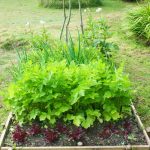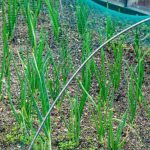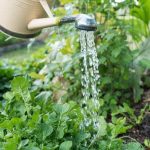Container vegetable gardening in South Florida offers a unique and exciting opportunity for gardeners to overcome the challenges of the region’s subtropical climate while enjoying the bounty of homegrown produce. With limited space and fluctuating microclimates, container gardening has gained popularity as an effective solution for growing vegetables in this vibrant part of the country.
Not only does container gardening offer versatility and mobility but also allows for customization to suit individual preferences. In this article, we will delve into the world of container vegetable gardening in South Florida, exploring its potential, discussing suitable containers, selecting the right vegetables, caring for plants in this specific climate, managing pest and disease challenges, and showcasing success stories that will inspire readers to embark on their own container gardening journey.
South Florida’s subtropical climate presents unique gardening challenges that make traditional ground-based vegetable gardens less feasible. However, the growing popularity of container vegetable gardening has provided an alternative solution that eliminates space limitations and provides growers with greater control over environmental factors. Container gardens can be placed strategically to take advantage of microclimates within the region, ensuring optimal conditions for plant growth despite variations in temperature, sunlight exposure, and soil quality.
The benefits of choosing container gardening extend beyond adaptability to South Florida’s climate. Container gardens are highly customizable; gardeners can choose containers of different sizes and materials based on their needs and preferences. Additionally, container gardens offer mobility, allowing gardeners to move plants around according to changing weather conditions or limited outdoor space availability. Furthermore, containers provide an excellent option for those living in apartments or condominiums without access to traditional yard spaces.
Understanding the Climate and Microclimates of South Florida
South Florida is known for its subtropical climate, which presents unique challenges for gardening. The high temperatures, humidity, and heavy rainfall can make it difficult to grow vegetables successfully. However, by understanding the climate and microclimates of the region, you can adapt your container gardening techniques to increase your chances of success.
In South Florida, it is important to consider the microclimates that exist within the region. Microclimates refer to small areas with slightly different climatic conditions compared to their surrounding areas. For example, an urban environment may have higher temperatures due to the heat-absorbing properties of buildings and pavement. On the other hand, coastal areas may experience cooler temperatures due to ocean breezes.
To adapt your container gardening techniques to South Florida’s climate and microclimates, here are some tips:
- Choose your plants wisely: Select vegetable varieties that are well-suited for South Florida’s hot and humid conditions. Look for heat-tolerant varieties such as tomatoes, peppers, eggplants, cucumbers, and herbs like basil and oregano.
- Provide shade: Shield your containers from intense sun exposure by placing them under shade structures or using shade cloth during the hottest parts of the day. This will help prevent overheating and reduce water evaporation from the soil.
- Optimize watering practices: In South Florida’s high heat and humidity, it is important to monitor soil moisture levels closely. Regularly check the moisture level in your containers and water deeply when needed. Consider using irrigation systems such as drip irrigation or soaker hoses to deliver water directly to the roots while minimizing evaporation.
- Protect from strong winds: Strong winds common in South Florida can damage plants in containers. Place your containers in sheltered locations or use windbreaks such as trellises or fences to protect them from gusts.
By adapting your container gardening techniques to the specific climate and microclimates of South Florida, you can increase your chances of a successful vegetable garden. With proper planning and care, you can enjoy a bountiful harvest of homegrown produce in this unique gardening environment.
Choosing the Right Containers for Successful Veggie Growth
Choosing the right containers is crucial for successful vegetable growth in South Florida. Here are some tips to help you make the best choices for your container vegetable garden:
- Container Options: When selecting containers, there are various options to consider. Clay pots are popular due to their aesthetic appeal, but they can dry out quickly and may crack in extreme heat. Plastic containers are lightweight, affordable, and retain moisture well, making them a practical choice. Fabric containers provide excellent drainage and air circulation, but they require more frequent watering. Consider the advantages and disadvantages of each material before making your decision.
- Size and Depth: The size and depth of the container play a vital role in determining the success of your vegetable plants. Large containers allow for better root development and moisture retention, reducing the frequency of watering.
A general rule of thumb is to choose a container that provides at least 10-12 inches of soil depth for most vegetable varieties to thrive. However, certain vegetables with deep root systems, such as tomatoes or eggplants, may require larger containers with a depth of 18 inches or more. - Drainage: Proper drainage is essential for preventing waterlogged soil and root rot. Ensure that your chosen containers have drainage holes at the bottom to allow excess water to escape freely. To prevent soil from washing out through the drainage holes, place a piece of landscape fabric or a coffee filter over them before adding soil to the container.
- Mobility: Consider the mobility of your containers since South Florida experiences occasional tropical storms or hurricanes that may require moving your plants indoors temporarily for protection. Opt for lightweight containers that can be easily moved when needed.
By choosing suitable containers based on material, size, depth, drainage, and mobility considerations, you can create an optimal environment for successful vegetable growth in South Florida’s unique climate conditions.
Selecting the Perfect Vegetables for South Florida Container Gardens
Choosing the right vegetables is crucial for successful container gardening in South Florida. Due to the region’s unique climate, it’s essential to select vegetable varieties that can thrive in the hot and humid conditions. Here are some recommendations for vegetables that are well-suited to South Florida container gardens:
- Tomatoes: South Florida’s warm climate makes it an ideal environment for growing tomatoes. Choose determinate varieties, such as ‘Celebrity’ or ‘Patio,’ which are compact and perfect for container gardening. Look for heat-tolerant varieties that can withstand the intense sun.
- Peppers: Peppers are another excellent choice for container gardens in South Florida. Varieties like bell peppers, jalapenos, and banana peppers thrive in the warm weather conditions. Consider planting pepper plants in larger containers to accommodate their root systems.
- Herbs: Many herbs do well in containers and can add flavor to your meals all year round. Culinary herbs such as basil, oregano, rosemary, thyme, and mint grow exceptionally well in South Florida’s climate.
- Leafy greens: Lettuce, spinach, kale, and Swiss chard are delicious additions to any container garden. These cool-season vegetables can be grown successfully during the milder months of South Florida’s winter season.
- Cucumbers: Choose dwarf or bush cucumber varieties like ‘Bush Champion’ or ‘Spacemaster’ that produce smaller fruits but are perfect for container gardening.
It’s important to note that not all vegetables will thrive in containers due to space constraints and limited resources (such as water and nutrients). Some vegetables require more extensive root systems or need more space than others to grow properly. Therefore, researching specific vegetable varieties that have been proven successful in container gardening will increase your chances of a bountiful harvest.
In addition to selecting appropriate vegetable varieties, it is also crucial to understand the unique challenges of growing certain vegetables in containers. For example, vining plants like tomatoes and cucumbers may require trellises or stakes for support, while leafy greens may need adequate shade during the hottest part of the day. By addressing these challenges and providing suitable solutions, you can ensure the success of your South Florida container vegetable garden.
| Vegetable | Recommended Varieties |
|---|---|
| Tomatoes | ‘Celebrity’, ‘Patio’ |
| Peppers | Bell peppers, jalapenos, banana peppers |
| Herbs | Basil, oregano, rosemary, thyme, mint |
| Leafy Greens | Lettuce, spinach, kale, Swiss chard |
Preparing and Caring for Container Vegetable Gardens in South Florida
Preparing Containers for South Florida Vegetable Gardens
When it comes to container vegetable gardening in South Florida, proper preparation of the containers is essential for successful plant growth. The first step is selecting the right containers. Choose containers that are suitable for vegetables and can withstand the intense heat and humidity of the region.
Options such as clay, plastic, and fabric containers all have their pros and cons. Clay pots provide good drainage but may dry out quickly, while plastic pots retain moisture but may not allow sufficient airflow to the roots. Fabric pots offer excellent drainage and airflow but may require more frequent watering.
To prepare the containers, start by ensuring they have adequate drainage holes to prevent waterlogged soil, which can lead to root rot and other issues. Place a layer of mesh or coffee filters over the drainage holes to prevent soil from washing out while still allowing water to drain effectively. Fill the containers with a high-quality potting mix that is lightweight, well-draining, and rich in organic matter.
Caring for Container Vegetable Gardens in South Florida
Proper care is essential for maintaining healthy container vegetable gardens in South Florida’s unique climate. One of the most important aspects of care is watering. The intense heat and sun exposure can cause containers to dry out quickly, so it’s crucial to monitor soil moisture levels regularly. Water deeply until excess water drains out of the bottom of the container, ensuring thorough hydration of the plant roots.
Feeding your plants regularly is also important for optimal growth. Choose a balanced liquid fertilizer or slow-release granular fertilizer specifically formulated for vegetables. Follow package instructions for application rates and frequency, as excessive fertilization can lead to nutrient burn or other issues.
Pest Prevention in Container Vegetable Gardens
Container gardens are not immune to pests in South Florida, so proactive pest prevention measures are necessary. Regularly inspect your plants for signs of pests such as aphids, whiteflies, or caterpillars, and take appropriate action at the first sign of infestation. Consider using organic pest control methods such as insecticidal soaps, neem oil sprays, or companion planting with pest-repellent herbs.
Disease prevention is equally important in container vegetable gardens. Avoid overcrowding plants to promote proper airflow and reduce humidity levels that can contribute to fungal diseases. Remove infected leaves or plants immediately to prevent the spread of disease to healthy plants.
By taking these steps to prepare and care for your container vegetable gardens in South Florida, you can create a thriving oasis of homegrown bounty right in your backyard. With proper watering, fertilization, and pest prevention practices in place, your vegetable containers will flourish and provide you with delicious produce throughout the year.
Managing Pest and Disease Challenges in South Florida Container Gardens
Pest and disease management is a crucial aspect of container vegetable gardening in South Florida. The region’s warm and humid climate creates the perfect conditions for pests and diseases to thrive. Therefore, gardeners must be proactive in preventing and managing these challenges to ensure the success of their crops. This section will provide information on common pests and diseases in South Florida and offer organic, chemical-free solutions for pest control.
Identifying Common Pests and Diseases
South Florida is home to various pests that can pose a threat to container vegetable gardens. Common pests include aphids, whiteflies, caterpillars, snails, slugs, and spider mites. These insects can cause damage by feeding on plant leaves or transmitting diseases. Diseases such as powdery mildew, fusarium wilt, bacterial spot, and root rot can also affect container-grown vegetables.
Organic Pest Control Methods
Using organic pest control methods not only protects your plants but also helps preserve the local environment. One effective method is handpicking pests off the plants manually. For small infestations, this method can be incredibly successful. Another natural approach is introducing beneficial insects like ladybugs or lacewings that prey on pests.
There are also homemade repellents you can use to deter pests. A mixture of garlic or chili pepper infused in water can be sprayed on plants to repel insects. Additionally, neem oil is an organic insecticide derived from the seeds of the neem tree that can be used to control common garden pests.
Vigilant Monitoring and Early Intervention
Regular monitoring of your container garden is essential for early detection of any pest or disease issues. Regularly check for signs such as chewed leaves, discoloration, wilting, or visible insects. By catching problems early on, you can intervene before they escalate into larger issues.
If you notice any signs of pests or diseases, it is important to promptly take action. Remove and destroy infected plant material to prevent the spread of disease. For severe infestations, consider using organic insecticides like pyrethrin, which are derived from chrysanthemum flowers and are relatively safe for plants.
By implementing effective pest management strategies and practicing proactive monitoring, gardeners can successfully control pests and diseases in their South Florida container gardens. This ensures healthy plant growth and maximizes the yield of homegrown vegetables.
Seasonal Considerations and Planting Calendar for Container Vegetable Gardens
South Florida’s unique climate presents specific seasonal considerations for container vegetable gardening. The region experiences distinct growing seasons that vary from the rest of the country, making it crucial for gardeners to understand the optimal times for planting and harvesting their crops. By following a planting calendar tailored to South Florida’s conditions, container gardeners can maximize their yields and ensure the success of their vegetable gardens.
In South Florida, there are two primary growing seasons: a cool season from October to March and a warm season from April to September. During the cool season, temperatures are milder, ranging from 50°F to 80°F (10°C to 27°C), creating ideal conditions for many popular vegetables. Some vegetables that thrive during this period include tomatoes, peppers, kale, lettuce, broccoli, and carrots. These cooler months provide relief from intense heat and humidity, allowing plants to grow vigorously.
As the warm season arrives in South Florida, temperatures rise significantly, reaching as high as 95°F (35°C) or more. This heat poses challenges for some vegetable varieties but also creates opportunities for heat-tolerant crops that can withstand these conditions. Examples of heat-tolerant vegetables suitable for container gardening in South Florida include okra, sweet potatoes, yard-long beans, Southern peas, and certain varieties of herbs such as rosemary and thyme.
| Cool Season | Warm Season |
|---|---|
| Lettuce (October-March) | Okra (April-June) |
| Kale (October-March) | Sweet Potatoes (May-July) |
| Broccoli (November-March) | Yard-Long Beans (April-June) |
| Carrots (November-February) | Southern Peas (April-July) |
It is important to note that these are general guidelines, and microclimates within South Florida can slightly alter the optimal planting times. Gardeners should also consider their specific location, sun exposure, and available space when planning their planting calendar.
By understanding the unique growing seasons and following a tailored planting calendar, container vegetable gardeners in South Florida can enjoy successful harvests year-round and fully embrace the joys of homegrown produce.
Container Vegetable Garden Success Stories in South Florida
In South Florida, container vegetable gardening has become increasingly popular among gardening enthusiasts. Many individuals have embraced this method and have successfully grown their own fresh produce in containers, even in the face of the region’s unique challenges. These success stories serve as inspiring examples for others who are interested in starting their own container vegetable gardens.
One success story comes from Victoria Hernandez, a resident of Miami-Dade County. With limited space in her backyard, Victoria decided to give container gardening a try. She started with a few tomato plants and was amazed at the results.
Not only did she enjoy the convenience of having fresh tomatoes just steps away from her kitchen, but she also found that her plants were healthier and more productive than when she had tried traditional gardening methods. Encouraged by her success, Victoria expanded her container garden to include various herbs, peppers, and leafy greens.
Another success story is that of Carlos Gomez from Broward County. Carlos lives in an apartment complex where outdoor space is limited to a small balcony. Despite this constraint, he was determined to grow his own vegetables.
He researched different container options and settled on using fabric pots because of their excellent drainage capabilities. Carlos started with a variety of lettuce and spinach plants and was delighted by how well they grew. Seeing his initial success, Carlos expanded his garden to include compact varieties of cucumbers and beans, which thrived in his sunny balcony.
These success stories demonstrate that anyone can achieve impressive results with container vegetable gardening in South Florida, regardless of space limitations or climate challenges. By selecting suitable containers for their specific needs, adapting techniques to accommodate the subtropical climate, and choosing appropriate vegetable varieties, gardeners can enjoy a bountiful harvest right at their doorstep.
If you have your own success story or tips to share about container vegetable gardening in South Florida, we would love to hear from you. Your experiences could inspire others to embark on their own gardening journey and reap the rewards of homegrown produce. Together, we can celebrate the joy and abundance that container vegetable gardening brings to South Florida.
Conclusion
Container vegetable gardening is a rewarding and practical solution for gardeners in South Florida. As this article has highlighted, the unique climate and microclimates of the region present challenges that can be overcome through container gardening techniques. By understanding the climate, selecting the right containers, choosing suitable vegetables, and diligently caring for their gardens, South Florida residents can enjoy a bountiful harvest of homegrown produce.
The benefits of container vegetable gardening in South Florida are numerous. The ability to customize gardens based on available space and mobility is a significant advantage. Containers can be easily moved to optimize sunlight exposure or protect plants from extreme weather conditions. Furthermore, the versatility of container gardening allows for year-round planting as seasons change in this region.
By embracing container vegetable gardening, gardeners in South Florida can experience the joy of growing their own food while minimizing environmental impact. Homegrown produce not only tastes better but also reduces reliance on commercially grown vegetables transported over long distances. Additionally, localized gardening practices promote sustainability by conserving water and reducing pesticide use.
In conclusion, container vegetable gardening offers an accessible and rewarding way for South Florida residents to bring fresh produce into their homes. Whether you have limited outdoor space or face challenging microclimates, container gardening allows you to adapt and thrive. So don’t wait any longer – start your own container garden today and experience the joy of sustainable, localized gardening while enjoying the delicious bounty it brings.

If you’re looking to get into vegetable gardening, or are just looking for some tips on how to make your current garden better, then you’ve come to the right place! My name is Ethel and I have been gardening for years. In this blog, I’m going to share with you some of my best tips on how to create a successful vegetable garden.





